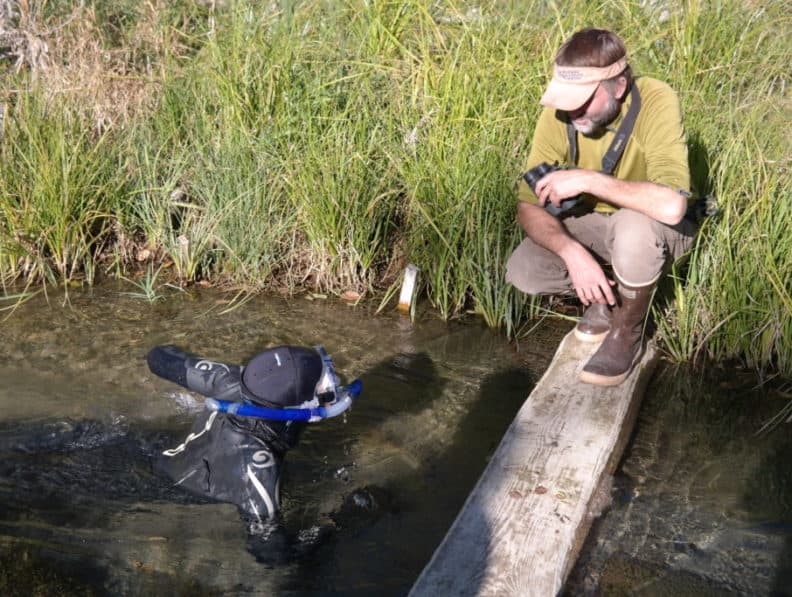
Natural History Field-Excursion: Learning the Value of Citizen Science
This post is the second of a 3-part series describing graduate students’ ten-day field excursion to the Methow Valley, as part of their fall Natural History Course. Below is writing by Zoe Wadkins, graduate student in the North Cascade Institute’s 17th cohort.
It was twenty-eight degrees out and declining. Seventeen of us gathered around a lone fire while Andromeda twinkled in the Eastern sky. Our second night atop Chelan Ridge with HawkWatch International held my cohort and I captivated by firelight – humbled by the elements, the beauty of raptor migration, and the relentlessness of the folks who perch atop these ridges in hope of conveying an important story to the world.
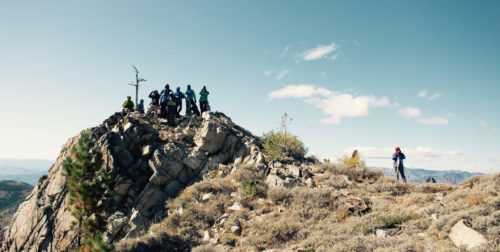
Graduate students stand atop Chelan Ridge
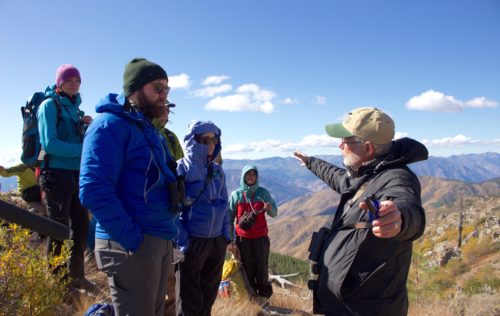
Kent Woodruff retired Biologist for the U.S. Forest Service taught bird aerodynamics from our lookout post
For a more in depth account of our experience with HawkWatch, please see Brendan McGarry’s post Migrating Raptors over Chelan Ridge.
Though welcomed into hearth and home, and gifted rare opportunity to partake in this season’s raptor counts, us graduate students were the ones now being thanked. Thanked by the people who devote a portion of their lives to banding and counting hawks in the name of science. Thanked for our presence and interest in their migratory bird studies. Thanked for committing ourselves to education, and for imparting our experience to the outside world.
I was moved by the words of encouragement from TC Walker, an employee of HawkWatch.
“Your passion for educating future generations is a lot of why we do what we do here. Go out and talk about it; share your excitement for what you’ve been part of. Our work is only valuable if you take it, and share it. Thank you for recognizing your role in this work – it’s worthy.”
Though delivered in so few words, TC tugged upon a thread uniquely woven throughout the Graduate M.Ed Program at the North Cascades Institute. His words resonate even now, reminding us that communities are only as far reaching as we define them and that we are all at this moment being invited to the table.
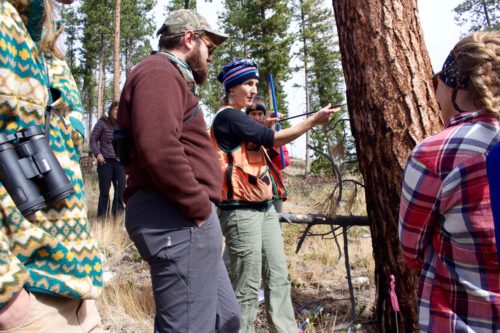
Susan Prichard, a Forest and Fire Ecologist for the U.S. Forest Service, shows us how to core a tree for research
Though it serves as many things, North Cascades Institute stands foremost as an institution of collaborative effort and strengthened partnerships. The success of cohort 17’s Natural History course attests to this commitment. Last fall, over the course of ten days, my cohort and I were gifted the time and expertise of seven different specialists widely known in the North Cascades Ecosystem for their contributions to science. Across disciplines, these experts bestowed their knowledge through dialogue and inquiry into issues facing our communities.
Whether we discussed the implications of non-native grass species with Dana Visalli, field botanist and director of Methow Biodiversity Project, or measured restoration value for beaver habitat with Julie Nelson, Wildlife Biologist for Washington Department of Fish and Wildlife, each specialist reinforced the immense value of citizen science.
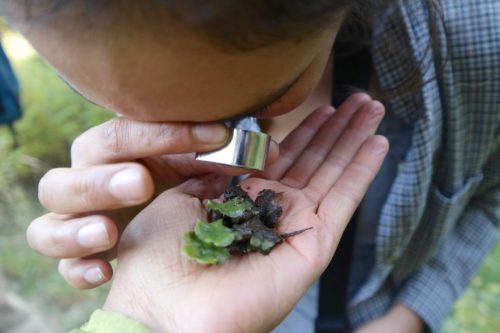
What do you see, Liz? Graduate student Liz Grewal closely examines an aquatic plant

Graduate students Eric Buher and Gina Roberti determine the water quality of salmon habitat. This activity was led by Kristin Kirkby, Project Manager for Cascade Columbia Fisheries Enhancement Group
Citizen Science (CS) by definition is a process of scientific research conducted through public participation. Through CS, science becomes a tangible and contributable subject for all, encouraging public voice for public concern. In addition, participants often foster greater connectedness to local environments. Incorporating citizen science throughout our Natural History Field-excursion expanded our local knowledge while making international subjects like raptor migrations more comprehensible through the lense of our own backyards. Subjects which, for many of us, have since invoked our own active scientific observation.
Yet in honor of TC’s words, time spent in the field is more than feeling enabled to contribute to citizen science, it is in honoring that the sacrifice and dedication of others persists. In part, our value as educators is in serving as a bridge between other’s findings and the audiences that need to benefit from them.

A handful of graduate students snorkel in salmon habitat to assess the ecosystem health
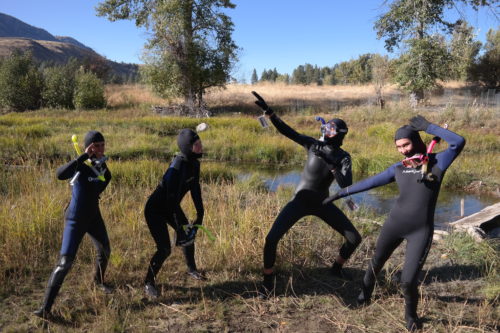
Gina Roberti, Kira Taylor-Hoar, Zoe Wadkins, and Liz Grewal pose in their wetsuits
When the subject of functional ecosystems presents itself amongst 5th graders in Mountain School, the profundity of species interconnectedness becomes an eye-opening experience for all involved. Recognizing the intricate connections necessitated by webs of life, I wonder at the interwoven ‘ecosystem’ of citizen science.
At what point in discussion of burn mosaics and wildfire behavior in the Methow Valley must we also converse of restorative salmon habitat or agricultural practices in the local watershed? Independently, each research effort is integral. And yet collectively compiled, broader tapestries take shape, both of Washington State and the larger ecosystems it is nested within.
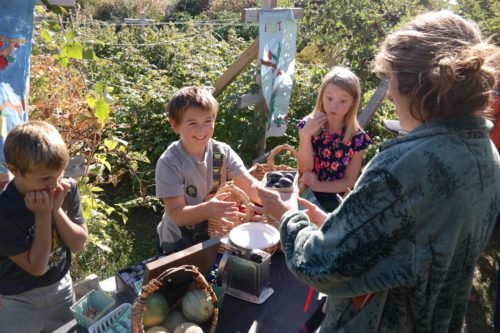
Graduate student Kira Taylor-Hoar “buys” vegetables from children at the Classroom in Bloom farmers market
Now that we have returned to the North Cascades Environmental Learning Center to begin our own respective engagements through Work Study, non-profit design, and curriculum development, it is difficult to imagine our potential as change agents while isolated at the end of an ever-increasingly impassable road. And yet, small actions like cataloging the weekly phenological phases for seven distinct plant species, and contributing ecological observations to the North Cascades Institute Almanac hold potential for far reaching impact. What can be inferred from this year’s first snowfall, arriving a month earlier than last? What difference does a month’s time have on species presence? Through single observation, innumerable questions transpire. May we, through the strength of our collaboration, continue to nourish them.
In case you missed the first post of the Natural History series, click here to read it.

